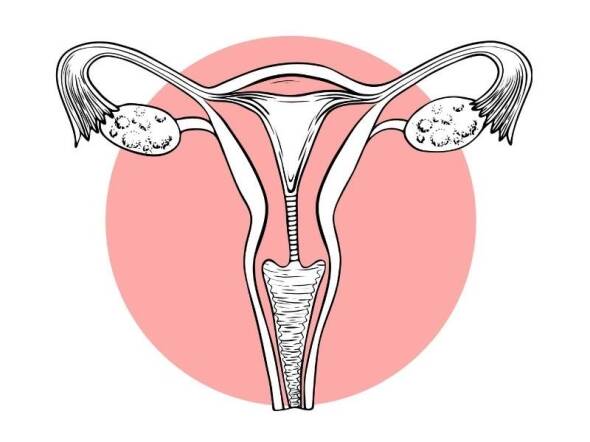Over the past 2 years or so, I have managed my patients through roughly 400 IVF cycles, and 2 liters of intravenous (IV) normal saline is the grand sum total of the treatment required for that much-feared complication of IVF: ovarian hyperstimulation syndrome (OHSS). 2 liters: That’s the size of one of those Coke bottles you buy at the supermarket for a party.
Just 5 years ago it was a much different story. IVF patients with OHSS frequently received multiple infusions of intravenous fluids, they were given a variety of other medications to try to stave off OHSS, and not infrequently they would have liters of ascites fluid drained from their pelvis in a procedure called a paracentesis (which is more commonly done for cancer patients or those with cirrhosis of the liver).
At RMA we often focus on the amazing advances that continue to improve the success and efficiency of IVF: improved laboratory culture conditions, trophectoderm biopsy, comprehensive chromosome screening, and elective euploid single embryo transfer. Maybe as important, though often overlooked, are the amazing advances we have made in improving the safety of IVF, allowing more and more couples to benefit from this technology.
How has safety improved to the point that OHSS, once a very rare but serious complication, is now virtually non-existent in my practice? At least 3 factors have converged to make this possible:
- close patient monitoring and dose adjustments,
- laboratory improvements (extended culture to the blastocyst stage and improved embryo freezing technology/vitrification)
- judicious use of a medication called GnRH agonist (usually leuprolide acetate) to trigger egg maturity prior to egg retrieval.
Close Patient Monitoring
At RMA we pride ourselves on attention to detail, leaving little to chance. While I often counsel my patients that the IVF cycle will be busy and annoying, it’s critically important that we perform ultrasounds and check blood levels of reproductive hormones at least every couple of days. This allows us to adjust doses when patients are on a trajectory to have a very high response.
While it may seem like the more eggs the better, recent studies from both the U.S. and Europe suggest that that’s only true up to a point. After around 15 eggs are retrieved in IVF pregnancy rates tend to plateau but the risk of OHSS rises. We aim for a moderate, safe response with good quality mature eggs in this response range.
Liberal use of blastocyst vitrification
In the past, when slow-freezing technology was employed, a higher proportion of embryos were lost when they were thawed. Also, laboratories were not as comfortable culturing embryos to day 5 or 6. This led to routine early transfers on day 2 or 3 of multiple embryos, sometimes before the true risk of OHSS was evident.
With OHSS there is an early form that occurs primarily from the large dose of hCG traditionally given to trigger egg maturity. The hCG can continue to stimulate the follicles left behind after the egg retrieval, resulting in the OHSS symptoms. This can be quite bothersome, but eventually resolves as the hCG is metabolized.
Late OHSS occurs when a woman conceives and her early pregnancy starts to provide a new source of hCG. Rather than declining, however, these hCG levels rise exponentially in early pregnancy putting women at risk of weeks of severe symptoms such as bloating, dehydration, hemoconcentration and shortness of breath.
After the ultra-rapid freezing technique of vitrification, 98% of embryos survive when warmed and implant in the uterus just as well as fresh blastocysts. If women are exhibiting signs of OHSS, we now have a low threshold to freeze their embryos, thereby preventing late OHSS. Studies suggest when they get pregnant in a more natural frozen embryo transfer cycle, not only will they feel better, but the pregnancy outcomes may be better too.
GnRH agonist trigger
For decades it has been standard to give a large dose of hCG around 36 hours before the egg retrieval. This is a very reliable way to get the follicles and eggs to mature so that they can later be fertilized in the laboratory.
In natural cycles, however, there is a surge of LH, which is similar to hCG but doesn’t hang around in the bloodstream as long. It turns out that after taking the GnRH agonist leuprolide most women will mount a surge of LH, providing a more natural way to mature the follicles that don’t last as long as hCG. When this occurs we can prescribe significantly less, sometimes even no, hCG.
Many studies have shown that there is basically no risk of OHSS when hCG is withheld for those women at risk of OHSS. This is a complex topic in assisted reproductive technologies and not all patients are good candidates to have GnRH agonist trigger. Still, when used appropriately this strategy can dramatically reduce the risk even in women who traditionally would have been at the highest risk of OHSS.
For all the above reasons, more women are able to get through their IVF treatment feeling better and recovering faster. We have shifted to doing more frozen single blastocyst transfers which result in healthy delivery outcomes for moms and babies. While we haven’t completely eliminated OHSS as a risk of IVF, the incidence and severity are getting lower each year.
Our ultimate goal goes beyond one embryo, one baby, to include one healthy patient who feels great after IVF.
